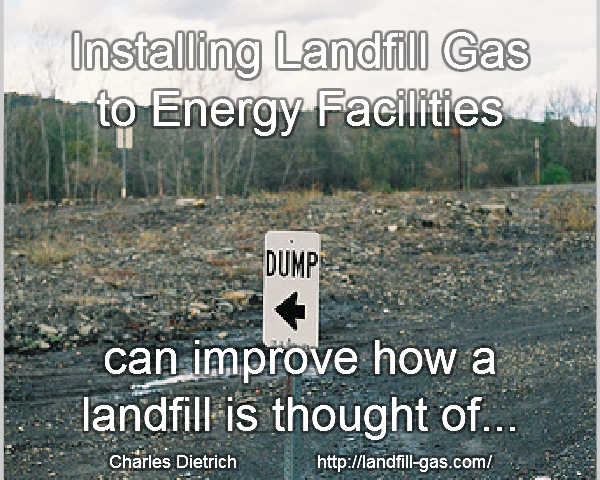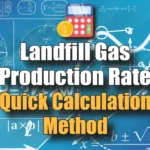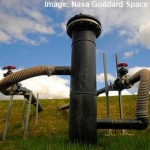 For those that ever wondered how the landfill gas to energy process (also known as LFGTE) works? This article takes you through how waste management companies convert naturally occurring landfill gas into clean renewable energy at its LFGTE facilities.
For those that ever wondered how the landfill gas to energy process (also known as LFGTE) works? This article takes you through how waste management companies convert naturally occurring landfill gas into clean renewable energy at its LFGTE facilities.
To give you an idea of how much the landfill gas to energy process is contributing to renewable energy production, let us say that it is big, and growing. In fact, giving an example from just one waste company in the US alone, landfill gas is utilized at more than 80 sites within Waste Management Inc. By doing this Waste Management Inc provides energy for 400,000 homes within the United States simply by converting their landfill gas to energy using the the landfill gas to energy process which we are about to decribe.
The Process of Turning Landfill Gas to Energy
The first step is for the landfill gas-to-energy plant to pull the gases from the decaying rubbish in the landfilled waste. For the average landfill the gas is pulled from up to about 300 borehole landfill gas extraction wells which each have a pipe which has been drilled directly into landfill and usually penetrates to the full depth of the waste. Each gas extraction well supplies landfill gas into a landfill gas collection pipework system which deliver it to a central location where the LFGTE plant compound is located. Perforated plastic pipes are inserted into the wells. The annulus around the pipes is filled with a medium particle size gravel to prevent refuse from plugging the perforations. The whole gas extraction pipe system runs under a vacuum created by “blowers” at the LFGTE facility compound, which causes landfill gas to flow from the wells. All the wells are connected by a series of small feeder pipes leading to larger “header pipes” that deliver the gas to the LFGTE facility.
In the most common the landfill gas to energy process these gases are monitored for their oxygen concentration. If there is insufficient methane present in the landfill gas for combustion in the energy process, the landfill gas is simply sent to the flare. This only happens rarely, and is usually corrected by the site LFGTE operating technician. The technician throttles back the extracted gas flow. He or she may also re-balance the valves at various locations on the collection system pipework. This way it is often possible to avoid too much air being pulled into the system.
Assuming that the Landfill gas is within the range of methane content which is needed for electrical power generation it is filtered or “scrubbed”. If necessary, this is done before the biogas is used to run one or more Caterpillar (or another reciprocating engine manufacturer's) internal combustion engines.
What Happens in Gas Engines
These have a shaft which rotates, and is coupled to turn large magnetic windings in the electricity generators to make electricity.
The electricity which is produced is an alternating current which flows through transformers which raise the voltage up to about 11,000 volts, sometimes higher and through an exported power meter. From that point the electricity goes into the local power grid and is used by consumers.
Each landfill gas-to-energy subsystem comprises a LFG turbine, gas compressor skid, LFG engine generators, and all the safety and control systems needed for safe efficient and reliable landfill gas to energy process.
Each landfill gas to energy process installation is provided with its own control and HMI package provided by various subsystem specialist contractors. These separate control packages are linked together to provide a single master control panel, with connections to the overall process and provides local supervisory control, monitoring, alarming and data collection for operational analysis and EPA/ local environmental regulator reporting.
This is usually done through an internet connection, it is usually for running data to also be viewed and analyzed on a remotely-located management computer, central station DCS/ PLC system display, or other Human to machine Interface (HMI) platform.
Climate Change Abatement
Never forget that the the landfill gas to energy process performs a useful “climate change/ greenhouse gas (GHG)” reducing function. Methane is 21 times more powerful than CO2 as a GHG. Landfill Gas-to-Energy (“LFGE”) removes all the methane converting it to CO2. This means that landfill gas generation projects help a lot in reducing GHG discharges to the atmosphere.
It isn't always appreciated, but, in addition to transforming a municipal waste into energy, such projects can qualify for a variety of renewable energy incentives and carbon credits under the Kyoto's Clean Development Mechanism as well as other globally recognised voluntary schemes.
Landfill Gas to Energy Creates Good Jobs
Landfill gas to energy jobs are growing as a result of increased implementation of landfill gas to energy projects, inspiring teachers to feature the technology with their students, in science fair projects which demonstrate landfill gas to energy systems. The landfill gas to energy cost is usually less than the income from the electricity exported to heat businesses and homes so that landfill gas recovery is cited as an energy process which not only produces renewable energy, it also earns a profit for the owner.
All operators must, of course, comply with national landfill gas to energy environmental requirements, or their local environmental regulator's requirements, as appropriate.
Landfill Gas Production Rate Quick Calculation Method
The Ready Reckoner or Rule of Thumb Estimate of Landfill Gas Production Rate/Yield! Quickly gain a VERY rough estimate of a landfill's Landfill Gas Production Rate! For the first considerations of a potential landfill gas production rate, before carrying out a full yield evaluation, for landfill gas utilization projects, you can use the following rules (but […]
Why Landfill Gas Recovery is Important
The Importance of Landfill Gas Recovery in Reducing Greenhouse Gas Emissions and the Proportion of Active Landfill Gas Recovery Achievable Over the Life of a Modern Sanitary Landfill Due to its high content of methane, landfill gas recovery can be regarded on the one hand as a useful alternative source of energy, when collected and […]
3 Methods Landfill Engineers Use to Assess Landfill Gas Production Rates
Many people have decided to assess landfill gas production. Ever since the first gas was seen bubbling from landfills in the 1970s, engineers have predicted landfill gas production, and recently a number of calculation models have been devised to predict the total volume and energy value/ climate change effect of landfill gas over the whole […]







